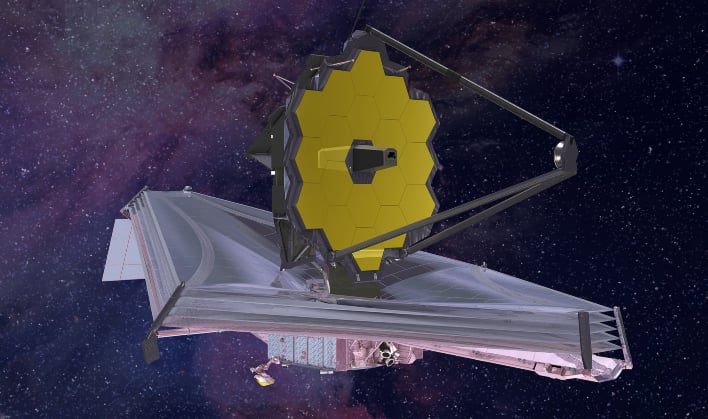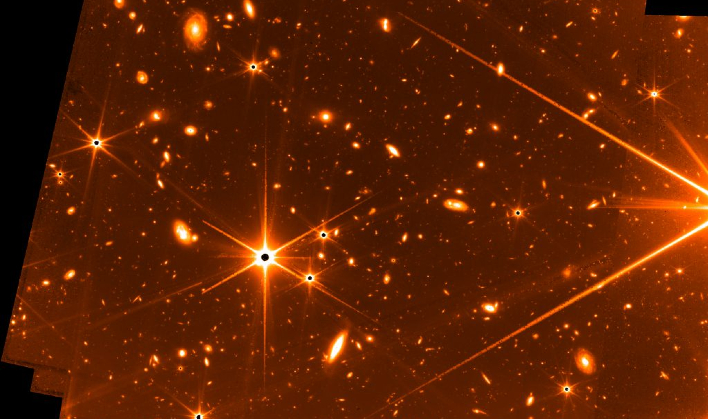NASA Reveals Stunning Cosmic Targets For Its Space Telescope's First Color Images

JWST has been in the works since the beginning of the 21st century. A test image was recently shared by NASA (see image below), in order to show the potential of the space telescope. JWST was first named the "Next Generation Space Telescope," before being renamed after a former NASA administrator, James Webb. Mr. Webb is most commonly linked to the Apollo moon program, and ran the agency from February 1961 to October 1968. It is said he did more for science than perhaps any other government official, and thus is only fitting that the Next Generation Space Telescope be named after him.
The Webb telescope is a large infrared telescope with a 6.5-meter primary mirror. It was launched on its long journey from French Guiana by an Ariane 5 rocket in 2021. It was created in collaboration between NASA, the European Space Agency (ESA), and the Canadian Space Agency (CSA).
The primary mirror, which is made up of 18 separate segments that unfolded and adjusted to shape after launch, is coated with gold to capture faint infrared light in deep space. A secondary mirror will be utilized to reflect light from the primary mirror into the space instruments. A five layered shield protects the observatory from the light and heat of the Sun and Earth, and makes it possible for the observatory and instruments to perform their individual functions.
The spacecraft is powered via a solar power array that is always facing the Sun. Panels convert the sunlight it collects into electricity in order to power the observatory. An Earth-pointing antenna sends the scientific data back to Earth and receives its directives from NASA's Deep Space Network.
These are just some of the many intricate parts to JWST and what makes it so astonishing. As we approach July 12, 2022, and the time NASA shares its first images from the Webb telescope, NASA has shared a list of cosmic targets the space telescope will be capturing its first images of.

- Carina Nebula: One of the largest and brightest nebulae in the sky. It is located approximately 7,600 light-years away in the southern constellation Carina.
- WASP-96 b (spectrum): It is a giant planet outside our solar system, composed mainly of gas. The planet is approximately 1,150 light-years from Earth.
- Southern Ring Nebula: This nebula is an expanding cloud of gas, surrounding a dying star. It is nearly half a light-year in diameter and is about 2,000 light-years away from Earth.
- Stephen's Quintet: It is located in the constellation Pegasus, and is notable for being the first compact galaxy group ever discovered in 1877. Four of the five galaxies are "locked in a cosmic dance of repeated close encounters".
- SMACS 0723: Massive foreground galaxy clusters magnify and distort the light of objects behind them, allowing a deep field view into both the extremely distant and intrinsically faint galaxy populations.
Top Image Credit: NASA/ESA/CSA


